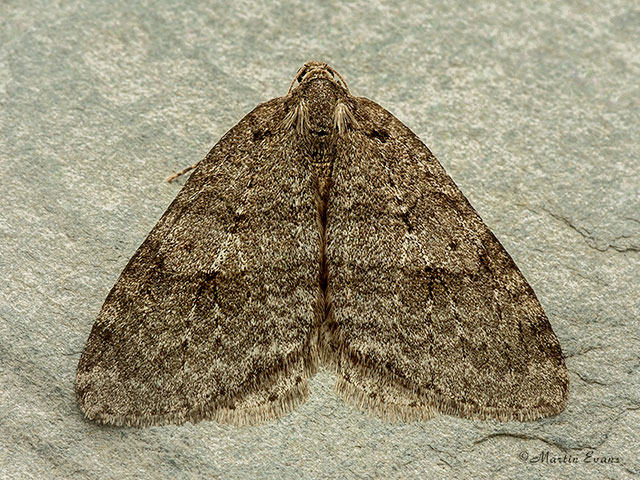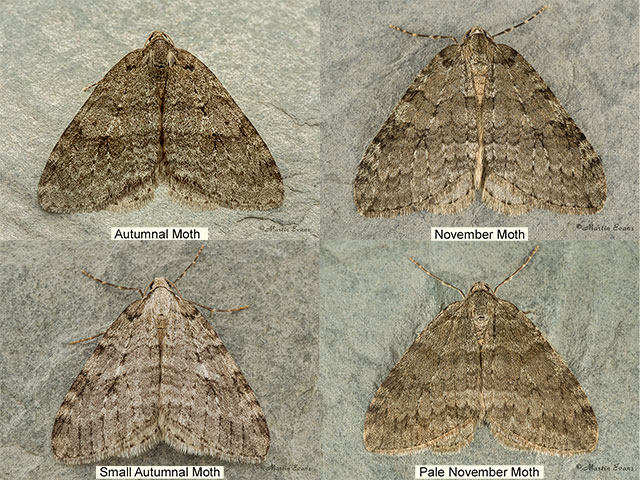Geometridae
70.109 Autumnal Moth Epirrita autumnata (Borkhausen, 1794)
Common
Similar species: (These ID features are only useful for well marked specimens). Autumnal Moth Epirrita autumnata has the outer edge of the paler cross-band forming a fairly deep indentation away from the dark spot which is well distanced from the edge of the band on each side. November Moth Epirrita dilutata has the spot in the paler cross-band either linked to the outer edge of the band or integrated with it. Small Autumnal Moth Epirrita filigrammaria is on average smaller (14 to 18mm) than the other three species and usually has a paler thorax. The outer edge of the paler cross-band is deeply indented away from the dark spot, but is almost in line with the edge of the band on each side. Pale November Moth Epirrita christyi has the outer edge of the paler cross-band curving around the dark spot, but is almost in line with the edge of the band on each side. If not totally sure, check the genitalia.
Forewing: 16 to 20mm
Habitats: Open deciduous woodland and rides, mixed woodland, mountain moorland and lowland birch woodland, heathland and occasionally gardens.
Habits: The moth comes to light.
Foodplant: The larva feeds on Silver Birch, Downy Birch, Alder and sometimes other deciduous trees. It also feeds on Heather and is occasionally found on Larch and Scots Pine. In captivity it accepts Hawthorn. It pupates in the soil.




